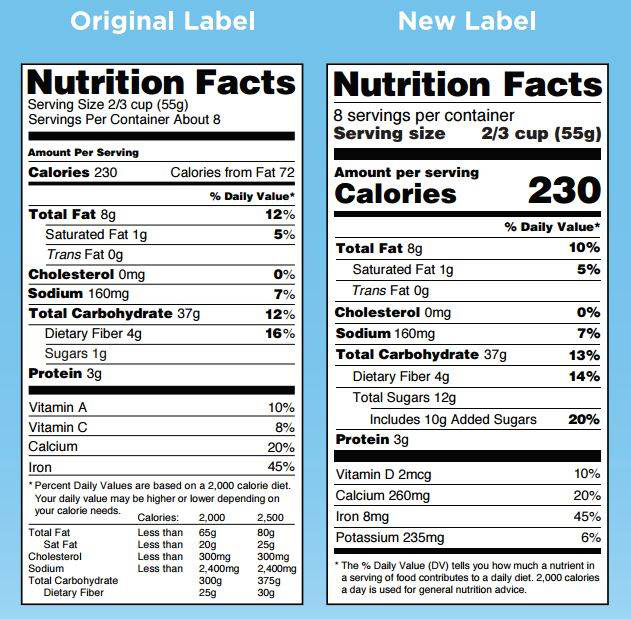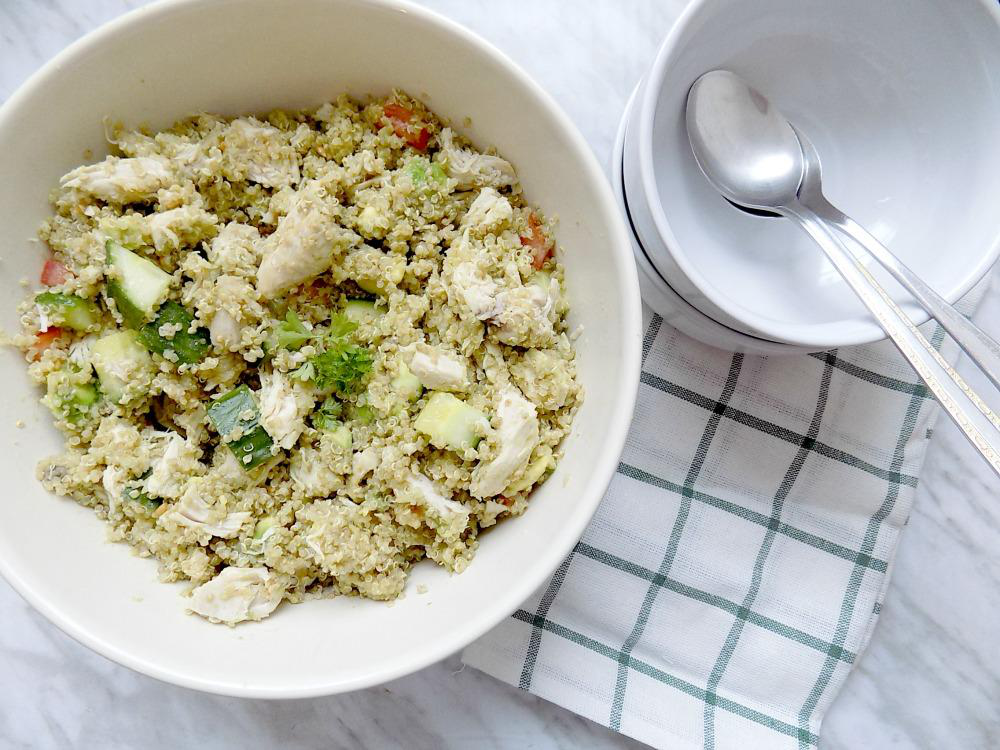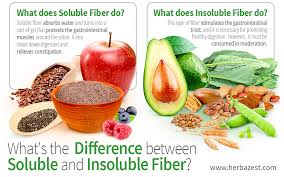Reading a food label is one of the most important skills you can have when transitioning into a healthier lifestyle. Unfortunately, most people have been trained to only look at the calorie section.
If you truly want food to be your primary healer, you need to expand your thinking. This article will show you how.
To make this as easy as possible, we’ll explore this lesson in several steps. First, we’ll examine how to interpret the sections of the current food labels. After that, I’ll explain the newest iteration approved by the FDA. This redesigned label will become the standard in the next two years. One addition in particular is a fantastic tool for health enthusiasts!
Knowing these facts will help you make better food choices over the course of your life.
Sections of the old food label
Everybody knows to pay attention to the number of calories in a food. Most people don’t know is that a food label has three additional sections that you should be aware of. These sections, include information about macronutrients, micronutrients and footnote.
Understanding these sections in detail will help you make better food choices without sacrificing things you love.
The fats section
Unfortunately, too many health professionals react negatively to this section. Yes, eating foods that are ridiculously high in fat is bad for you, we all know this. Health professionals undoubtedly had good intentions. Their mistake was to create a panic rather than not giving you the motivation to change your ways.
You did not become healthy overnight, so restoring it will take time. And when you have sensible information, change will come naturally. Let’s get into the meat of this section.

First thing labeled is the various fats – saturated, unsaturated, cholesterol. The above section shows you a closer look and contains important markers you should look for. Remember that fats are good for you in moderate amounts so don’t overthink this and stress yourself out.
Do you see the percentage comment? That is the part you should focus on rather than the number of grams. If one food has more than 10% of the recommended daily value (RDV) of any given fat, don’t eat it!
Grasping the carbohydrates portion of the food label

The second macronutrient that is identified are the carbohydrates. Bear in mind, that carbohydrates are important to your health, otherwise they wouldn’t exist.
As you read this section, it is important to think of the total number you can consume in a given day. and stay healthy – 300 to 375g is all you need. Let’s break that down into percentages again.
No one food you eat should have more than 10 percent of your RDV (recommended daily value). So, if it has more than 40g in one serving, it is best to steer clear of this food, unless there is a special occasion you are celebrating.
Two additional things you should keep in mind, especially related to carbohydrates, when reading a food label. They are the sugar and fiber content in any given food. Let’s look at these using the label above.
Sugar
Don’t forget that carbohydrates are important because they break down into sugar molecules that our bodies use for energy. However, you all know that eating excessive carbohydrates is bad for your health, so I won’t bore you with a lecture on that.
A better approach, rather than driving yourself crazy over how much sugar you’re eating, is to create a new guideline for appropriate levels of sugar in a food you eat.
The label used throughout this post had a carbohydrate content of 31 grams and a sugar content of 5 grams. That translates to this particular example being 16% sugar per serving. To be confident you’ll get enough energy from a meal, but don’t overwhelm your system, I’d recommend including foods in your diet that are between 10% and 20% sugar.
This gives you wiggle room to enjoy some of the sweeter foods in life without feeling too guilty.
Fiber
Another vital factor to remember when thinking about your carbohydrate intake is fiber. Unfortunately, in today’s world carbohydrates are demonized because they break down into sugar. When that happens, people forget that they get fiber through carbohydrates.
Think of some of the foods rich in fiber that are deemed bad because they are so high in carbs: bananas, carrots, berries, et cetera. Let’s change this and think of a reasonable fiber range using the example food label above.
Do you see how this food has 0 grams of fiber? That is an indicator that it isn’t the best food to keep in your menu, but we can use it as a learning tool. Since the recommended daily intake of fiber is 25-30 grams, it is wise to aim for foods that have at least 2 grams of fiber per serving.
Yes, you may go to the bathroom more, but at least you know that your body is getting rid of what it can’t use, optimizing your health!
Interpreting the protein section

The final macronutrient every food label identifies is protein. Protein is the most important because of how its smaller parts, amino acids, catalyze different processes in the body like muscle repair (after a workout) or hormone stabilization.
The picture above only shows how much is available per serving, which is a decent 5 grams, but it doesn’t give a percentage of the RDV.
To optimize your health, you should eat 0.36 grams for every pound you weigh (1). So, if you’re a man who weighs 175 pounds, you should consume 63 grams of protein per day.
How was the new food label redesigned?
Benefits of the redesigned food label
Now you are up to speed on the sections of the old food label. Let’s examine how it’s changed for the better
Bigger print
Undoubtedly the best improvement is the bigger font. The older labels were not hard to read but the information was cramped. Presenting it this way made it easy for someone to miss what the correct portion size if in a rush. However, enlarging the font will make it easier for you to adopt a healthier lifestyle to get and stay on track, especially if you’re short on time.
Better grouping
The older food labels were good at keeping macronutrients (fats, carbs and proteins) together. However, they had two micronutrients (vitamins and minerals) in an awkward spot. Sodium and potassium were two minerals that needed to be featured because of their excess consumption and negative health effects.
Sodium is well-known for causing chronic health issues like heart disease and water retention when eaten in excess. Potassium, however, was thought to have negative effects, but it is more geared towards specific health issues like diabetes.
Today people are more conscious about the levels of sodium they get in their menus, which is fantastic. Sadly most people do not know how much potassium they get each day. So, it is a smart redesign to move potassium into a group with the other micronutrients.
Added sugar information
Added sugar has been a huge problem in the American diet of the last 20 years. In the past, big food companies were able to take advantage of consumers through food labels. They did so by not revealing the amount of sugar they added to their products. This new food label changes that and now consumers will have more control over their health!
Revamp drawbacks
The new food label gives consumers a much clearer picture of how they’re eating, which is fantastic! However, there is one thing I wish the FDA would have left the same: daily requirements. Fine print can be annoying, it was a great reminder of what everyone needs to get each day.




